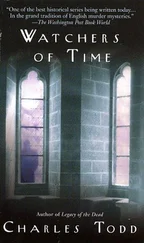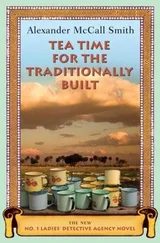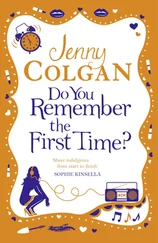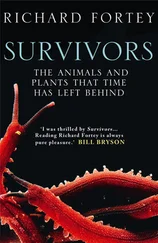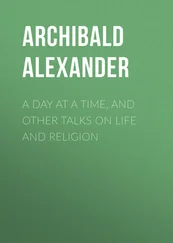Alexander Todd - A Time to Remember
Здесь есть возможность читать онлайн «Alexander Todd - A Time to Remember» весь текст электронной книги совершенно бесплатно (целиком полную версию без сокращений). В некоторых случаях можно слушать аудио, скачать через торрент в формате fb2 и присутствует краткое содержание. Город: Cambridge, Год выпуска: 1983, ISBN: 1983, Издательство: Cambridge University Press, Жанр: Химия, Биографии и Мемуары, на английском языке. Описание произведения, (предисловие) а так же отзывы посетителей доступны на портале библиотеки ЛибКат.
- Название:A Time to Remember
- Автор:
- Издательство:Cambridge University Press
- Жанр:
- Год:1983
- Город:Cambridge
- ISBN:0 521 25593 7
- Рейтинг книги:3 / 5. Голосов: 1
-
Избранное:Добавить в избранное
- Отзывы:
-
Ваша оценка:
- 60
- 1
- 2
- 3
- 4
- 5
A Time to Remember: краткое содержание, описание и аннотация
Предлагаем к чтению аннотацию, описание, краткое содержание или предисловие (зависит от того, что написал сам автор книги «A Time to Remember»). Если вы не нашли необходимую информацию о книге — напишите в комментариях, мы постараемся отыскать её.
A Time to Remember — читать онлайн бесплатно полную книгу (весь текст) целиком
Ниже представлен текст книги, разбитый по страницам. Система сохранения места последней прочитанной страницы, позволяет с удобством читать онлайн бесплатно книгу «A Time to Remember», без необходимости каждый раз заново искать на чём Вы остановились. Поставьте закладку, и сможете в любой момент перейти на страницу, на которой закончили чтение.
Интервал:
Закладка:
Examining in Singapore was quite tame after all this, but it was very interesting. I began to be aware of some of the problems which led to the later separation of Malaysia and Singapore. It was quite striking to see that the student body seemed to be mainly Chinese, with some Indians and very few Malays; in my experience, too, the Malays were the least able students, and gave the impression of having been badly prepared for university education. Hong Kong was, of course, very different in this respect, the student body being entirely Chinese. The University of Hong Kong was largely staffed (although by no means wholly) by expatriates from the United Kingdom; academically its standards were quite high, but it seemed to me at the time to have a quaintly colonial atmosphere. It had a first-class Vice-Chancellor in Sir Lindsay Ride, an Australian trained originally in medicine; he and his wife May were excellent hosts; both had long been resident in Hong Kong, had become part of the local scene, and were highly and deservedly respected throughout the colony. Both Victoria and Kowloon were much less built up than they are today - indeed, as I recall it, the only buildings which might have been called skyscrapers were the headquarters of the Hong Kong and Shanghai Banking Corporation and the Communist Bank of China which stood cheek by jowl not far from the waterfront in Victoria.
By the time I returned to England (after pausing to attend a joint meeting of the British Society for Chemical Industry and its Italian counterpart in Turin) the Churchill College Appeal was well under way and shortly thereafter the Trustees appointed Sir John Cockcroft as Master. Thereupon we appointed a Bursar (General Hamilton) and a Senior Tutor (J.E.Morrison) to help in organising and planning the new college. Building plans were approved following a competition among architects, and the actual construction was begun about a year later. From this time onwards I kept in touch with progress but was not intimately concerned with the further development of Churchill College.
It was my hope that with less commitment to Churchill College I would have much more time for research; but I had reckoned without knowing that in the autumn of 1957 I was to be awarded the Nobel Prize for chemistry. One of the consequences of receiving such an award is that one has academic honours showered upon one and receives invitations to lecture, open laboratories and so on all over the world; some of these one can decline, but by no means all of them.
So it was that I found myself again visiting India in 1960 where, in addition to lecturing in a number of centres, I received the degree of D.Sc. honoris causa from the Muslim University of Aligarh. That really was a party! My wife and I travelled to Aligarh by train from Delhi, and were met and escorted from the station to the university by a troop of cavalry belonging, I presume, to the Officers Training Corps. It was quite an experience to arrive at the huge pandal which had been erected for the graduation ceremonies (for several hundred students were taking their degrees at the same function) with an escort of horsemen in highly coloured uniforms and bearing lances with pennants flying. At the ceremony itself I was impressed by the fact that all the girl students wore the traditional black Islamic garb with yashmak; I must say that several of them, whom I saw riding bicycles in this dress, looked rather comical - and, I thought, distinctly unsafe!
At home my duties as chairman of the Advisory Council on Scientific Policy and adviser to the Minister for Science still demanded a good deal of attention. I had also, since 1955, been intimately concerned with the International Union of Pure and Applied Chemistry and was a member of the Executive Committee of that body and later, from 1963 to 1965, its President. At that time, the Committee was under some pressure from overseas colleagues to stage some manifestation in the Southern Hemisphere, which had been totally neglected as a meeting location throughout the Union's history. It was finally decided that, with the help of our Australian colleagues, we should break new ground both geographically and subject-wise by holding the Union's first Natural Products Symposium in Australia in August 1960. Our Australian colleagues did a magnificent job and, with full cooperation from State and Commonwealth governments, the symposium, which divided its time between Melbourne, Sydney and Canberra, was a huge success and began a regular series of such symposia under the auspices of IUPAC, which have since been held biennially in many countries around the globe. I had the honour to be President of the 1960 Symposium which was attended by a large number of the leading chemists from every continent. It was a truly memorable event.
My friend Bob Woodward of Harvard was also going to the Australian Symposium and, as he had never previously been in the East, we decided to fly out together and spend a day in Singapore en route. I met him on his arrival at Heathrow from Boston in mid-August and we both proceeded to the plane for Singapore; unfortunately we had both forgotten to do anything about cholera injections, so we were hauled off to a medical unit on the perimeter of London airport and forcibly inoculated before being put on our plane for a trip thereby made somewhat less comfortable than it might have been. However, we arrived in Singapore the following evening in time to have a shower and go to a party. Very late, we returned with our host and hostess (Mr Johnson, the Singapore manager of Glaxo Laboratories Ltd, and his wife) to their home for a few hours sleep (before that could be done I remember having to remove an enormous cockroach-like creature from Bob's bathroom, while he stood by petrified, and clearly in some doubt as to whether the creature was real or a figment of a slightly whisky-inspired imagination). The following day we crossed over the causeway and, with our hosts, spent a pleasant day in Johore as guests of the State's chief medical officer (an ebullient Chinese with a fine taste in food) and returned to Singapore to get the evening plane to Sydney and Melbourne.
On our return we were informed that our plane would be at least four hours late, and as a result we found ourselves at another party and were almost poured on to the Australian plane in the small hours of the morning. What with about three nights without sleep, and with sleet falling quite heavily on our arrival at Melbourne, we were not in the best of shape to deal with the mass of reporters waiting at the airport. Bob, however, pulled himself together sufficiently to deliver a strong attack on what he described as the most dangerous characteristic of the Australians - addiction to fresh air and physical exercise both of which he abhorred. The symposium opened in Melbourne then moved after a few days to Canberra and had its final week in Sydney. I had a large black Commonwealth limousine at my disposal in each city, so that Bob Woodward and I drove around in state. The whole trip was punctuated by hilarious incidents in which we were involved but perhaps the most memorable occasion was the delivery of my Presidential Address. I gave it in Canberra in that remarkable hemispherical building which houses the Australian Academy of Science. In the lecture room there, the wall behind the rostrum was ornamented by vertical slats alternately light and dark brown in colour set an inch or two apart. Now, when lecturing without using notes, I have a habit of frequently moving a step or two to right and left while I am speaking. With a background of coloured slats the effect on an audience of such lateral movement is rather like sea-sickness. Since that day in Canberra I have always claimed that, while most of my scientific colleagues both can and do put their audiences to sleep on occasion, few, if any, can emulate me in my feat of making members of my audience actively ill.
Читать дальшеИнтервал:
Закладка:
Похожие книги на «A Time to Remember»
Представляем Вашему вниманию похожие книги на «A Time to Remember» списком для выбора. Мы отобрали схожую по названию и смыслу литературу в надежде предоставить читателям больше вариантов отыскать новые, интересные, ещё непрочитанные произведения.
Обсуждение, отзывы о книге «A Time to Remember» и просто собственные мнения читателей. Оставьте ваши комментарии, напишите, что Вы думаете о произведении, его смысле или главных героях. Укажите что конкретно понравилось, а что нет, и почему Вы так считаете.

